Ginger Tea: A Natural Remedy for Period Bloating – An Indian Youth’s Guide
Menstrual cycles can be challenging, with cramps, mood swings, and the infamous bloating making it hard to function at your best.
If you’re an Indian youth juggling studies, work, and social commitments, the added discomfort of period bloating can feel like an unwelcome guest. But what if the solution lies in your kitchen?
According to age-old wisdom—something our mothers have always known—ginger tea is a simple, effective remedy for easing period bloating.
This blog delves into why ginger tea is a go-to solution for menstrual bloating and how it aligns with the lifestyle of Indian youth. Let’s explore how this golden elixir can make your period days a little easier.
Understanding Period Bloating
Period bloating occurs due to hormonal fluctuations, particularly increased levels of estrogen and progesterone. These hormones cause water retention, which leads to a feeling of puffiness or tightness, especially around the abdomen.
While bloating is a normal part of the menstrual cycle, it can be uncomfortable and frustrating.
Why Do Indian Youth Face More Challenges?
As a young Indian, you may already have a hectic lifestyle, balancing academics, work, or other responsibilities. Add to this the cultural expectations and dietary habits that sometimes lean heavily on processed foods, salt, or caffeine—all of which can exacerbate bloating.
Furthermore, in many Indian households, discussing menstruation with male family members is still considered taboo. Some deeply ingrained cultural practices also restrict women during their menstrual cycle, such as not allowing them to enter the kitchen or sleep in a proper bed.
These emotionally distressing practices can, in turn, cause stress, leading to the release of cortisol, a stress hormone that worsens physical discomfort, including bloating.
This is where natural remedies like ginger tea can make a significant difference.
Why Ginger Tea Works Wonders for Period Bloating
1. Anti-inflammatory Properties
Ginger contains powerful anti-inflammatory compounds called gingerols and shogaols. These help reduce the inflammation in the gut, relieving bloating and soothing abdominal discomfort.
2. Promotes Digestive Health
Bloating often stems from digestive issues like slow metabolism or gas buildup. Ginger tea stimulates the digestive enzymes, aiding in faster digestion and reducing gas.
3. Diuretic Effect
Ginger tea has mild diuretic properties that help flush out excess water from the body, reducing water retention and puffiness.
4. Hormonal Balance
Ginger may also play a role in regulating hormones, helping reduce the severity of period symptoms, including bloating, cramps, and mood swings.
5. Warmth and Comfort
A hot cup of ginger tea provides warmth and relaxation, which can ease period discomfort and elevate your mood during challenging days.
Ginger Tea for Period Bloating: Step-by-Step Approach with External Resources
Here’s how you can implement ginger tea as a remedy for period bloating, broken down into actionable steps. Additionally, external links provide deeper insights and credibility.
Step 1: Understand the Science Behind Ginger and Menstrual Health
Before diving into remedies, it’s helpful to understand why ginger is effective for bloating and menstrual discomfort. Research confirms its anti-inflammatory, digestive, and hormone-regulating properties.
External Resources:
Step 2: Gather Ingredients
Head to your kitchen or a local grocery store to gather the following ingredients:
- Fresh ginger root
- Water
- Optional: honey, lemon, or additional spices like cardamom
External Resources:
- BBC Good Food: Why Fresh Ginger Is Better Than Powder
- Times of India: Ginger Benefits in Indian Cooking
Step 3: Prepare Ginger Tea
Follow this quick recipe:
- Boil 2 cups of water in a pan.
- Grate or thinly slice 1-2 inches of fresh ginger.
- Add the ginger to the boiling water and let it simmer for 5-7 minutes.
- Strain the tea into a cup.
- Add a teaspoon of honey or a squeeze of lemon for extra flavor.
External Resources:
Step 4: Drink Responsibly
Consume ginger tea once or twice a day during your menstrual cycle. Avoid drinking excessive amounts, as it can lead to acidity or heartburn in some individuals.
External Resources:
Step 5: Pair Ginger Tea with Lifestyle Adjustments
For maximum relief, complement ginger tea with:
- Hydration: Drink at least 2-3 liters of water daily.
- Diet: Include fiber-rich foods and avoid salty snacks.
- Light Exercise: Try yoga or gentle stretching exercises.
External Resources:
Step 6: Monitor the Results
Keep track of how ginger tea affects your period symptoms over a few cycles. If the bloating significantly reduces, incorporate it into your routine. However, if symptoms persist, consult a healthcare provider.
External Resources:
- WebMD: When to See a Doctor for Menstrual Symptoms
- National Library of Medicine: Gut Health and Hormonal Cycles
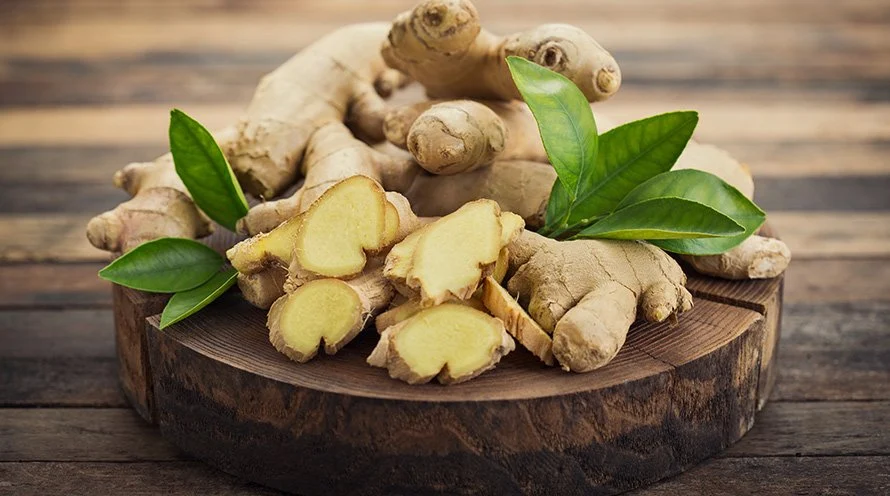
Quick Overview of the Steps to Use Ginger Tea for Period Bloating
- Understand the Science Behind Ginger
Ginger’s anti-inflammatory and digestive properties make it effective for easing period bloating. Its ability to regulate hormones also helps reduce discomfort during your menstrual cycle. - Gather the Ingredients
You’ll need fresh ginger root, water, and optional ingredients like honey, lemon, or cardamom for added flavor. - Prepare Ginger Tea
Boil 2 cups of water, add grated or sliced ginger, and let it simmer for 5-7 minutes. Strain into a cup and add honey or lemon if desired. - Drink Responsibly
Drink ginger tea once or twice a day during your period, but avoid overconsumption to prevent acidity or heartburn. - Pair with Lifestyle Adjustments
Stay hydrated, eat fiber-rich foods, and engage in light exercise like yoga to enhance the effectiveness of ginger tea in reducing bloating. - Monitor the Results
Track how your symptoms change over a few cycles. If bloating decreases, continue using ginger tea. If symptoms persist, consult a healthcare provider.
By following these simple steps, you can naturally manage period bloating and stay connected to time-tested, culturally rooted remedies.
When and How Often Should You Drink Ginger Tea?
For best results, drink ginger tea:
- 1-2 times a day during your menstrual cycle, especially when bloating is at its peak.
- First thing in the morning on an empty stomach or in the evening for a calming effect.
Avoid overconsumption, as too much ginger can sometimes cause heartburn or acidity.
The Cultural Connection: Wisdom Passed Down
In Indian households, natural remedies like ginger tea have been trusted for generations. Whether it’s curing a sore throat or soothing an upset stomach, ginger holds a revered place in Ayurvedic medicine. Our mothers and grandmothers often know the value of these age-old practices, even when modern science is just catching up.
As Indian youth, incorporating these traditional remedies into your lifestyle allows you to stay connected to your roots while addressing modern-day health challenges.
Why Ginger Tea Fits the Lifestyle of Indian Youth
- Quick and Easy to Prepare: With minimal ingredients and effort, ginger tea can be made in minutes, making it perfect for busy students or young professionals.
- Affordable and Accessible: Ginger is readily available in most Indian kitchens, making this remedy cost-effective and convenient.
- Customizable Flavor: You can experiment with add-ons like cardamom, cinnamon, or tulsi to suit your taste preferences.
- Holistic Wellness: Beyond bloating, ginger tea helps with cramps, nausea, and even stress—common challenges faced by Indian youth.
Additional Tips to Combat Period Bloating
While ginger tea is an excellent remedy, combining it with a healthy lifestyle can enhance its effects:
- Stay Hydrated: Drink plenty of water to prevent water retention.
- Reduce Salt Intake: Avoid salty snacks, which can worsen bloating.
- Eat Fiber-Rich Foods: Include fruits, vegetables, and whole grains in your diet to promote digestion.
- Exercise Gently: Yoga and light stretches can help alleviate bloating and cramps.
- Limit Caffeine: Replace coffee with herbal teas like ginger, chamomile, or peppermint during your period.
Conclusion: A Cup of Comfort
Ginger tea is more than just a beverage—it’s a cup of comfort, offering relief from period bloating and other menstrual woes. As an Indian youth navigating the complexities of modern life, embracing this traditional remedy can be a game-changer for your overall well-being.
The next time your period brings along bloating, listen to your mom’s advice and brew yourself a warm, soothing cup of ginger tea. It’s a small act of self-care that can make a big difference.
So, why wait? Give ginger tea a try and experience its magical benefits for yourself!
Disclaimer:
The information provided in this blog is intended for general informational purposes only. While ginger tea has been traditionally used in Ayurvedic medicine and has some proven health benefits, it should not be considered a substitute for professional medical advice, diagnosis, or treatment. Always consult with a healthcare provider before making any significant changes to your diet, especially if you have underlying health conditions or are taking medications.
Individual results may vary, and excessive consumption of ginger can lead to side effects such as heartburn or gastrointestinal discomfort. Please consume ginger tea in moderation.
The external resources linked in this article are for reference purposes and do not necessarily reflect the views or recommendations of the author.
-

5 Brazil Nut Benefits You didn’t know.
Brazil nuts are not just a delicious snack; they are also packed with numerous health benefits that can enhance your overall well-being.
These nuts are a rich source for micro nutrients such as selenium, magnesium and other healthy fats.
Let’s explore five remarkable benefits of Brazil nuts and how they can contribute to your health.
Introduction to Brazil Nuts
Brazil nuts are a rich source of dry fruits and nuts that provide numerous health benefits. They are an excellent source of micro nutrients, including selenium, magnesium, and healthy fats. According to Healthline, one ounce of Brazil nuts provides about 10% of the daily recommended intake of magnesium. Incorporate these nuts into your diet to experience their numerous health benefits!
Best dry fruits and nuts for your lazy evenings.
1. Selenium Superstars: Thyroid Support and Immunity Boost
One of the standout features of Brazil nuts is their exceptional selenium content. Selenium is essential for thyroid hormone production and plays a crucial role in immune function.
Did you know: They are are one of the richest dietary sources of selenium, a trace mineral essential for various bodily functions, including thyroid hormone production and immune function. Just one Brazil nut can provide more than the daily recommended intake of selenium.
Antioxidant Properties: The selenium in Brazil nuts acts as a powerful antioxidant, helping to reduce oxidative stress and inflammation in the body. This can lower the risk of chronic diseases such as cancer and heart disease
A study published in the Journal of Nutrition found that selenium deficiency can lead to impaired immune function. Add Brazil nuts to your diet to support thyroid health and boost your immunity!
2. Magnesium Magic: Reducing Inflammation and Relaxing Muscles
Brazil nuts are not only delicious but also an excellent source of magnesium, a vital mineral that plays numerous roles in maintaining health. Here’s a deeper look into how magnesium in these nuts contributes to reducing inflammation, soothing muscles, and supporting overall well-being.
Role of Magnesium in the Body
- Muscle Relaxation: Magnesium is crucial for muscle function. It helps muscles relax after contraction by regulating calcium levels in muscle cells. This is particularly important for preventing muscle cramps and spasms.
- Nerve Function: Magnesium is essential for proper nerve function. It helps transmit signals between the brain and the rest of the body, ensuring that the nervous system operates efficiently. Adequate magnesium levels can help alleviate symptoms of anxiety and promote a sense of calm.
- Energy Production: Magnesium plays a key role in converting food into energy. It is involved in the ATP (adenosine triphosphate) production process, which is the primary energy carrier in cells. This means that sufficient magnesium levels can enhance physical performance and reduce fatigue.
- Bone Health: Magnesium is vital for maintaining healthy bones. It works in conjunction with calcium and vitamin D to support bone density and strength, helping to prevent osteoporosis.
- Cardiovascular Health: Magnesium helps regulate blood pressure and supports heart health by maintaining normal heart rhythms. It can help prevent hypertension and reduce the risk of heart disease.
Anti-Inflammatory Properties
- Reducing Inflammation: Magnesium has been shown to possess anti-inflammatory properties, which can be beneficial for individuals with chronic inflammatory conditions such as arthritis or asthma. Studies indicate that higher magnesium intake is associated with lower levels of inflammatory markers in the body.
- Oxidative Stress: Magnesium helps combat oxidative stress by supporting the function of antioxidant enzymes. This can protect cells from damage caused by free radicals, which are implicated in various chronic diseases.
Recommended Intake
The recommended dietary allowance (RDA) for magnesium varies by age and gender:
- Adult men: 400-420 mg per day
- Adult women: 310-320 mg per day
Just one ounce (about 6-8 Brazil nuts) can provide approximately 25% of the daily recommended intake of magnesium, making them an excellent choice for boosting your magnesium levels.
How to Incorporate Brazil Nuts into Your Diet
- Snacking: Enjoy Brazil nuts as a healthy snack on their own or mixed with other nuts.
- Salads: Chop Brazil nuts and sprinkle them over salads for added crunch and nutrition.
- Smoothies: Blend Brazil nuts into smoothies for a creamy texture and nutrient boost.
- Baking: Use ground Brazil nuts in baking recipes, such as cookies or muffins, to enhance flavor and nutrition.
Incorporating Brazil nuts into your diet can significantly contribute to your magnesium intake, supporting muscle relaxation, nerve function, energy production, and reducing inflammation. Their rich nutrient profile makes them a versatile addition to various dishes while providing numerous health benefits that promote overall well-being.
For more information on the health benefits of magnesium, you can refer to these trusted sources:
National Institutes of Health – Magnesium Fact Sheet
Click here to know more about nutritional facts about Brazil nuts : Source- USDA
3. Heart Health Helpers: Lowering Cholesterol and Blood Pressure
Packed with healthy fats, Brazil nuts promote heart health by lowering LDL cholesterol and regulating blood pressure. The monounsaturated and polyunsaturated fats in these nuts help reduce the risk of heart disease. A study published in the Journal of Nutrition found that consuming these nuts can help lower LDL cholesterol and improve overall heart health. Add Brazil nuts to your diet to support heart health and reduce the risk of heart disease.
4. Brain Boosters: Sharpening Cognitive Function
Brazil nuts contain antioxidants and essential fatty acids that protect brain cells and support cognitive health. The selenium and magnesium in Brazil nuts also play a role in supporting brain function and development. According to Healthline, the antioxidants in Brazil nuts can help reduce the risk of age-related cognitive decline. Incorporate Brazil nuts into your diet to support brain health and sharpen your cognitive function.
5. Gut-Friendly: Prebiotic Support for Digestive Health
High in fiber, Brazil nuts act as prebiotics, feeding beneficial gut bacteria and promoting digestive regularity. The fiber in Brazil nuts also helps support healthy blood sugar levels and satiety. A study published in the Journal of Nutrition found that consuming Brazil nuts can help support gut health and reduce the risk of digestive disorders. Add Brazil nuts to your diet to support gut health and promote digestive regularity.
Conclusion
Brazil nuts are a nutrient-rich food that provides numerous health benefits, including brazil nuts benefits such as supporting thyroid health, reducing inflammation, promoting heart health, enhancing cognitive function, and aiding digestion. According to Healthline, Brazil nuts are one of the richest sources of selenium, an essential mineral for overall health. Start experiencing the numerous health benefits of Brazil nuts by incorporating them into your diet today! Visit our website for more information on healthy foods and nutrition.
Here are additional facts about Brazil nuts, along with trusted sources that provide detailed information on their health benefits:
Key Facts About Brazil Nuts
- Rich in Selenium: Brazil nuts are one of the richest dietary sources of selenium, a trace mineral essential for various bodily functions, including thyroid hormone production and immune function. Just one Brazil nut can provide more than the daily recommended intake of selenium.
- Antioxidant Properties: The selenium in Brazil nuts acts as a powerful antioxidant, helping to reduce oxidative stress and inflammation in the body. This can lower the risk of chronic diseases such as cancer and heart disease [1][4].
- Heart Health: Regular consumption of Brazil nuts has been shown to improve lipid profiles by lowering LDL (bad cholesterol) and increasing HDL (good cholesterol) levels. A study found that eating just one Brazil nut a day can significantly improve cholesterol levels [4][5].
- Cognitive Support: The antioxidants and healthy fats in Brazil nuts may help protect brain health and improve cognitive function. Research suggests that selenium deficiency is linked to cognitive decline, making these nuts a beneficial addition for brain health [1][5].
- Blood Sugar Regulation: Selenium has been shown to improve insulin sensitivity, which can help regulate blood sugar levels, particularly in individuals with type 2 diabetes [1][4].
- Anti-Inflammatory Effects: The anti-inflammatory properties of selenium can help reduce chronic inflammation, which is associated with various health conditions, including heart disease and diabetes [1][4][5].
- Nutritional Profile: In addition to selenium, Brazil nuts are rich in healthy fats (especially monounsaturated fats), magnesium, copper, and fiber, contributing to overall health [3][6].
- Moderation is Key: Despite their health benefits, it’s important to consume Brazil nuts in moderation due to their high selenium content. Overconsumption can lead to selenium toxicity, which may cause symptoms like nausea, diarrhea, and hair loss [1].
Trusted Links for Further Reading
- Health.com – Health Benefits of Brazil Nuts
- NCBI – A Single Consumption of High Amounts of the Brazil Nuts Improves Serum Lipid Profile
- PubMed – Nutritional Composition and Health Benefits of Brazil Nuts
- Medical News Today – Brazil Nuts: Health Benefits, Nutrition, and Risks
- BBC Good Food – Top 8 Health Benefits of Brazil Nuts
- ResearchGate – Brazil Nuts and Associated Health Benefits: A Review
These facts and sources provide a comprehensive overview of the benefits of incorporating Brazil nuts into your diet while highlighting the importance of moderation for optimal health benefits.
Citations:
[1] https://www.health.com/brazil-nuts-health-benefits-7255653
[2] https://pmc.ncbi.nlm.nih.gov/articles/PMC3693158/
[3] https://pubmed.ncbi.nlm.nih.gov/28888463/
[4] https://www.medicalnewstoday.com/articles/325000
[5] https://www.bbcgoodfood.com/health/nutrition/health-benefits-brazil-nuts
[6] https://www.researchgate.net/publication/223004187_Brazil_nuts_and_associated_health_benefits_A_review -
10 best dry fruits and nuts for your lazy evenings.
Here are nine dry fruits that are perfect for enjoying during lazy evenings, along with their health benefits:
1. Almonds
Why Almonds Are Good for Your Health
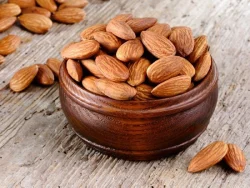
Benefits:
- Rich in Nutrients:
Almonds are high in antioxidants, vitamin E, protein, and fiber.
(Healthline) - Heart Health:
Regular consumption of almonds can lower LDL (bad cholesterol) levels and reduce the risk of heart disease.
(Medical News Today) - Weight Management:
Almonds’ high protein and fiber content can help with weight management by promoting satiety.
(EatingWell) - Brain Health:
Almonds contain riboflavin and L-carnitine, which support cognitive function.
(Verywell Health) - Skin and Hair Health:
The vitamin E and antioxidants in almonds promote healthy skin and hair.
(Verywell Health)
Serving Size:
- A typical serving size is 28 grams, which is about 23 almonds.
(Nutritionix)
Nutritional Highlights (per 28g serving):
- Calories: Approximately 164 kcal
(Nutritionix) - Protein: 6 grams
(Nutritionix) - Fiber: 4 grams
(Nutritionix) - Vitamin E: 35% of the Daily Value (DV)
(Healthline) - Magnesium: 20% of the DV
(Healthline)
Incorporating almonds into your diet can contribute to overall health, but it’s essential to consume them in moderation due to their calorie density.
2. Cashewnuts
Why Cashew Nuts Are Good for Your Health

Benefits:
- Heart Health:
Cashews are rich in monounsaturated fats, which help reduce bad cholesterol (LDL) and improve heart health. They also provide magnesium and copper, which support overall cardiovascular function.
(Healthline) - Rich in Antioxidants:
Cashews contain antioxidants like vitamin E and selenium, which protect the body from oxidative stress, reduce inflammation, and may lower the risk of chronic diseases such as heart disease and cancer.
(PubMed) - Supports Bone Health:
Cashews are an excellent source of magnesium and calcium, both essential for maintaining strong bones and preventing bone-related disorders like osteoporosis.
(Medical News Today) - Promotes Healthy Weight Management:
Despite being calorie-dense, cashews can help with weight management. Their healthy fats, protein, and fiber content contribute to feelings of fullness and prevent overeating.
(Verywell Fit) - Supports Brain Function:
Cashews contain zinc, which is important for brain health and cognitive function. Zinc deficiency has been linked to memory and mood disorders, so including cashews in your diet can help maintain mental sharpness.
(PubMed) - Boosts Immunity:
Cashews are a good source of zinc, which plays a vital role in maintaining a strong immune system and fighting off infections.
(Harvard Health)
Serving Size:
- A typical serving size is about 1 ounce (28 grams), which is approximately 18 cashews.
(Nutritionix)
Nutritional Highlights (per 28g serving):
- Calories: Approximately 157 kcal
(Nutritionix) - Protein: 5 grams
(Nutritionix) - Fiber: 1 gram (4% of the Daily Value)
(Healthline) - Potassium: 5% of the Daily Value
(Verywell Fit) - Magnesium: 20% of the Daily Value
(Medical News Today)
Incorporating cashews into your diet can promote heart health, enhance brain function, support bone health, and boost immunity. They make a great snack on their own, or can be added to salads, stir-fries, or desserts!
3. Walnuts
Why Walnuts Are Good for Your Health
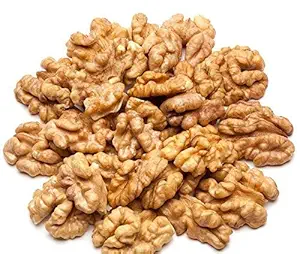
Benefits:
- Rich in Omega-3 Fatty Acids:
Walnuts are an excellent source of plant-based omega-3 fatty acids, which support heart health and reduce inflammation.
(Healthline) - Brain Health:
Rich in polyphenolic compounds and DHA, walnuts improve cognitive function and reduce the risk of neurodegenerative diseases.
(Medical News Today) - Heart Health:
Regular consumption of walnuts can lower LDL cholesterol, improve endothelial function, and reduce blood pressure.
(Harvard Health) - Gut Health:
Walnuts support the growth of beneficial gut bacteria, enhancing digestive health.
(Science Daily) - Cancer Prevention:
Antioxidants and anti-inflammatory compounds in walnuts may reduce the risk of certain cancers, such as breast and prostate cancer.
(PubMed)
- Serving Size:
- A typical serving size is 28 grams, which is about 14 walnut halves.
(Nutritionix)
- A typical serving size is 28 grams, which is about 14 walnut halves.
- Nutritional Highlights (per 28g serving):
- Calories: Approximately 185 kcal
(Nutritionix) - Protein: 4 grams
(Nutritionix) - Fiber: 2 grams
(Nutritionix) - Omega-3 Fatty Acids: 2.5 grams
(Healthline) - Magnesium: 11% of the Daily Value (DV)
(Harvard Health)
Incorporating walnuts into your diet can support heart, brain, and gut health, but they are calorie-dense, so moderation is key.
4. Pistachios
Why Pistachios Are Good for Your Health
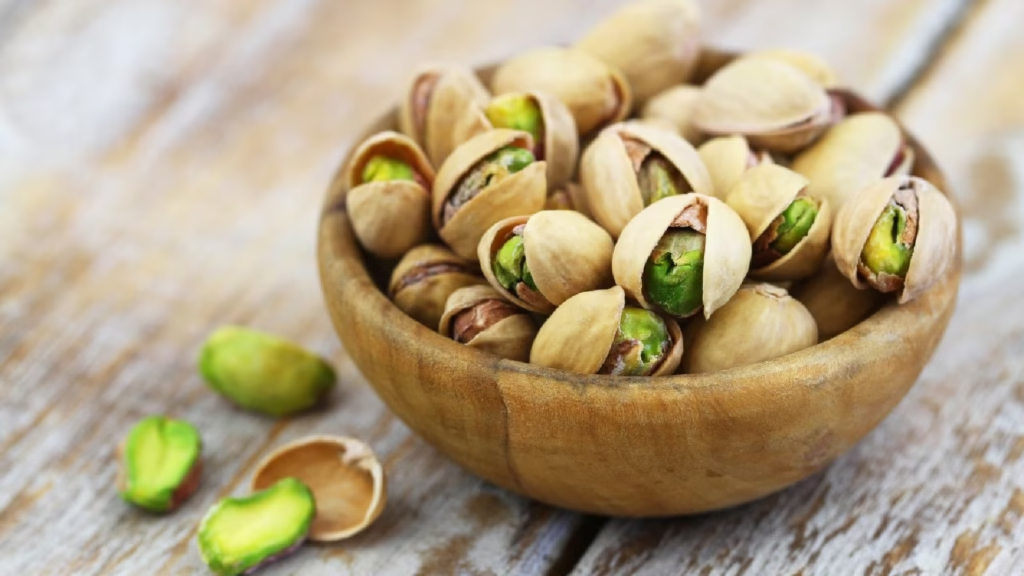
Benefits:
- Rich in Nutrients:
Pistachios are packed with vitamins, minerals, and antioxidants, including vitamin B6, potassium, and lutein.
(Healthline) - Heart Health:
Pistachios help lower LDL cholesterol and improve HDL cholesterol levels, promoting heart health.
(American Heart Association) - Weight Management:
Low in calories but high in protein and fiber, pistachios help curb hunger and support weight loss.
(Medical News Today) - Eye Health:
Contains lutein and zeaxanthin, antioxidants that protect against age-related macular degeneration (AMD).
(PubMed) - Blood Sugar Control:
Pistachios have a low glycemic index and help regulate blood sugar levels, making them great for diabetics.
(Diabetes Care Journal)
- Serving Size:
- A typical serving size is 28 grams, which is about 49 pistachios (unshelled).
(Nutritionix)
- A typical serving size is 28 grams, which is about 49 pistachios (unshelled).
- Nutritional Highlights (per 28g serving):
- Calories: Approximately 159 kcal
(Nutritionix) - Protein: 6 grams
(Nutritionix) - Fiber: 3 grams
(Nutritionix) - Vitamin B6: 28% of the Daily Value (DV)
(Healthline) - Potassium: 8% of the DV
(Healthline)
Adding pistachios to your diet can support heart health, aid in weight management, and enhance vision and blood sugar control. Enjoy them in moderation for optimal health benefits!
5. Dried Figs
Why Dried Figs Are Good for Your Health
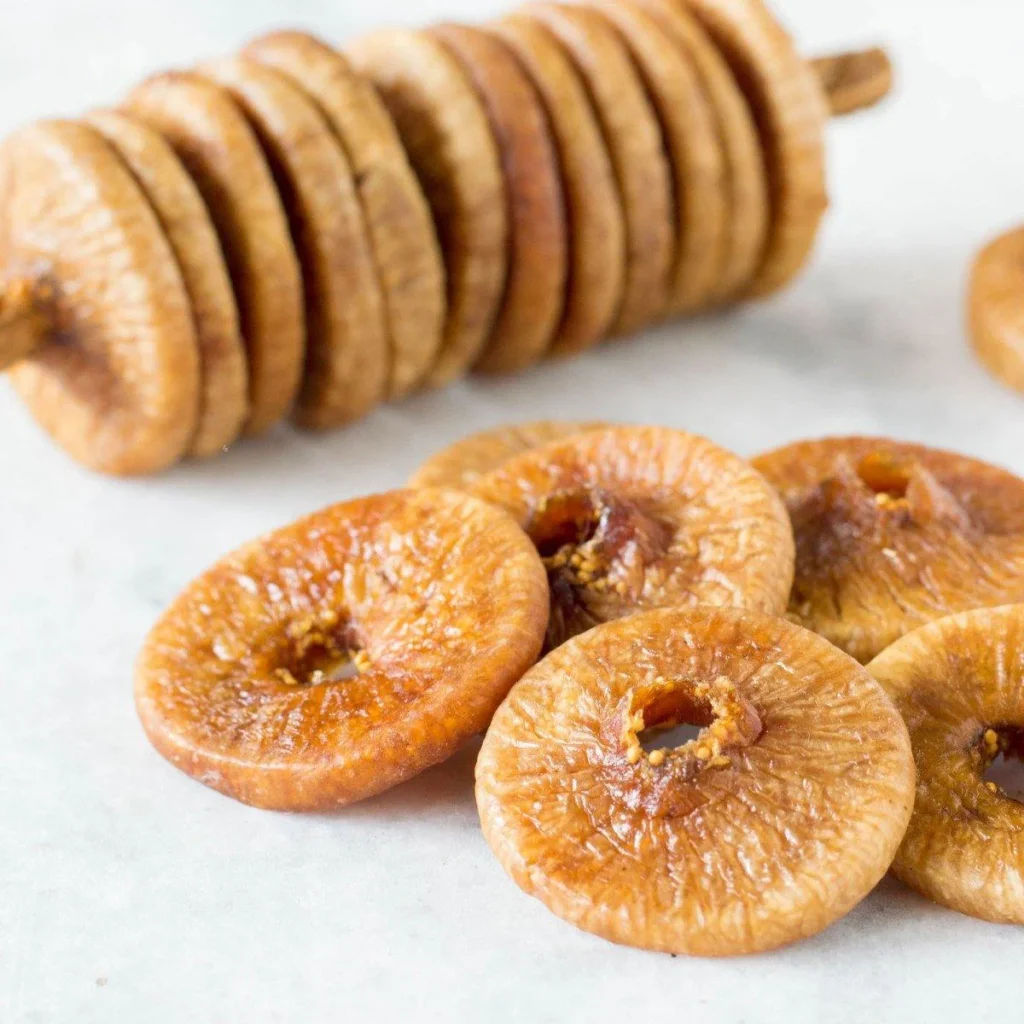
Benefits:
- Rich in Dietary Fiber:
Dried figs are an excellent source of fiber, aiding digestion, preventing constipation, and promoting gut health.
(Healthline) - Bone Health:
High in calcium, magnesium, and phosphorus, dried figs support bone density and strength.
(Medical News Today) - Rich in Antioxidants:
Packed with polyphenols and other antioxidants, dried figs protect against oxidative stress and reduce inflammation.
(PubMed) - Heart Health:
The potassium content in figs helps regulate blood pressure, while their antioxidants may reduce the risk of heart disease.
(Science Daily) - Natural Energy Booster:
Dried figs contain natural sugars like glucose and fructose, providing an energy boost and reducing fatigue.
(Verywell Fit)
- Serving Size:
- A typical serving size is about 40 grams (4-5 dried figs).
(Nutritionix) - Nutritional Highlights (per 40g serving):
- Calories: Approximately 100 kcal
(Nutritionix) - Protein: 1 gram
(Nutritionix) - Fiber: 4 grams (16% of the Daily Value)
(Healthline) - Calcium: 6% of the Daily Value
(Verywell Fit) - Potassium: 7% of the Daily Value
(Medical News Today)
Incorporating dried figs into your diet can support digestive health, strengthen bones, and improve heart function. Enjoy them as a healthy snack or add them to your meals!
6. Dates
Why Dates Are Good for Your Health
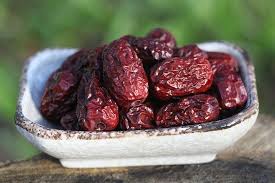
Benefits:
- Rich in Natural Sugars:
Dates are a great source of natural sugars like glucose, fructose, and sucrose, providing a quick energy boost.
(Healthline) - High in Fiber:
Dates promote healthy digestion, prevent constipation, and support gut health due to their high fiber content.
(Medical News Today) - Rich in Antioxidants:
Packed with flavonoids, carotenoids, and phenolic acid, dates help reduce inflammation and protect against chronic diseases.
(PubMed) - Heart Health:
Dates help regulate cholesterol levels and blood pressure due to their potassium and magnesium content.
(Harvard Health) - Bone Health:
Contain essential minerals like calcium, phosphorus, and magnesium, which support bone density and strength.
(Verywell Fit) - Natural Labor Aid:
Eating dates during pregnancy has been shown to promote cervical dilation and reduce the need for labor induction.
(PubMed)
- Serving Size:
- A typical serving size is about 40 grams (2-3 medium dates).
(Nutritionix) - Nutritional Highlights (per 40g serving):
- Calories: Approximately 120 kcal
(Nutritionix) - Protein: 1 gram
(Nutritionix) - Fiber: 3 grams (12% of the Daily Value)
(Healthline) - Potassium: 7% of the Daily Value
(Verywell Fit) - Magnesium: 6% of the Daily Value
(Medical News Today)
Incorporating dates into your diet can improve digestion, support heart and bone health, and provide a natural energy boost. They’re a versatile snack that can be enjoyed on their own or added to desserts and meals!
8. Apricots
Why Apricots Are Good for Your Health
Benefits:
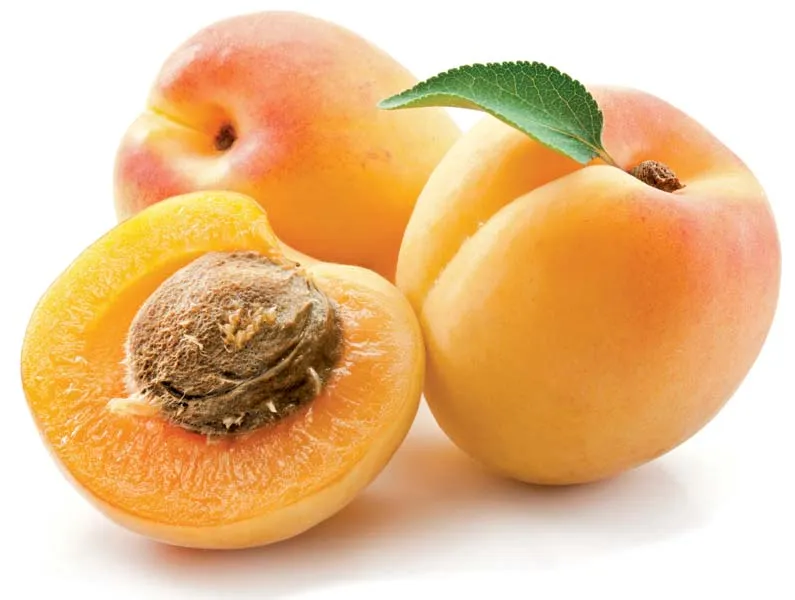
- Rich in Vitamins:
Apricots are an excellent source of vitamin A (in the form of beta-carotene), which is essential for eye health, immune function, and skin health.
(Healthline) - High in Fiber:
Apricots are a good source of dietary fiber, which promotes digestive health, helps prevent constipation, and supports gut microbiome balance.
(Medical News Today) - Rich in Antioxidants:
Packed with antioxidants like beta-carotene, lutein, and vitamin C, apricots protect the body against oxidative stress, inflammation, and chronic diseases.
(PubMed) - Heart Health:
Apricots contain potassium, which helps regulate blood pressure, and fiber, which aids in lowering cholesterol, both contributing to improved heart health.
(Harvard Health) - Skin Health:
The high vitamin A content in apricots supports healthy skin by promoting cell turnover and reducing the appearance of wrinkles and blemishes.
(Verywell Fit) - Boosts Immune System:
Apricots are rich in vitamin C, an essential nutrient for maintaining a strong immune system and combating infections.
(PubMed)
- Serving Size:
- A typical serving size is about 4-5 apricots (depending on their size).
(Nutritionix) - Nutritional Highlights (per 100g serving):
- Calories: Approximately 48 kcal
(Nutritionix) - Protein: 1 gram
(Nutritionix) - Fiber: 2 grams (8% of the Daily Value)
(Healthline) - Potassium: 9% of the Daily Value
(Verywell Fit) - Vitamin C: 10% of the Daily Value
(Medical News Today)
Incorporating apricots into your diet can support your immune system, promote healthy digestion, protect against oxidative stress, and improve skin health. Enjoy them as a snack, add them to salads, or use them in desserts and dishes!.
8. Hazelnuts
Why Hazelnuts Are Good for Your Health
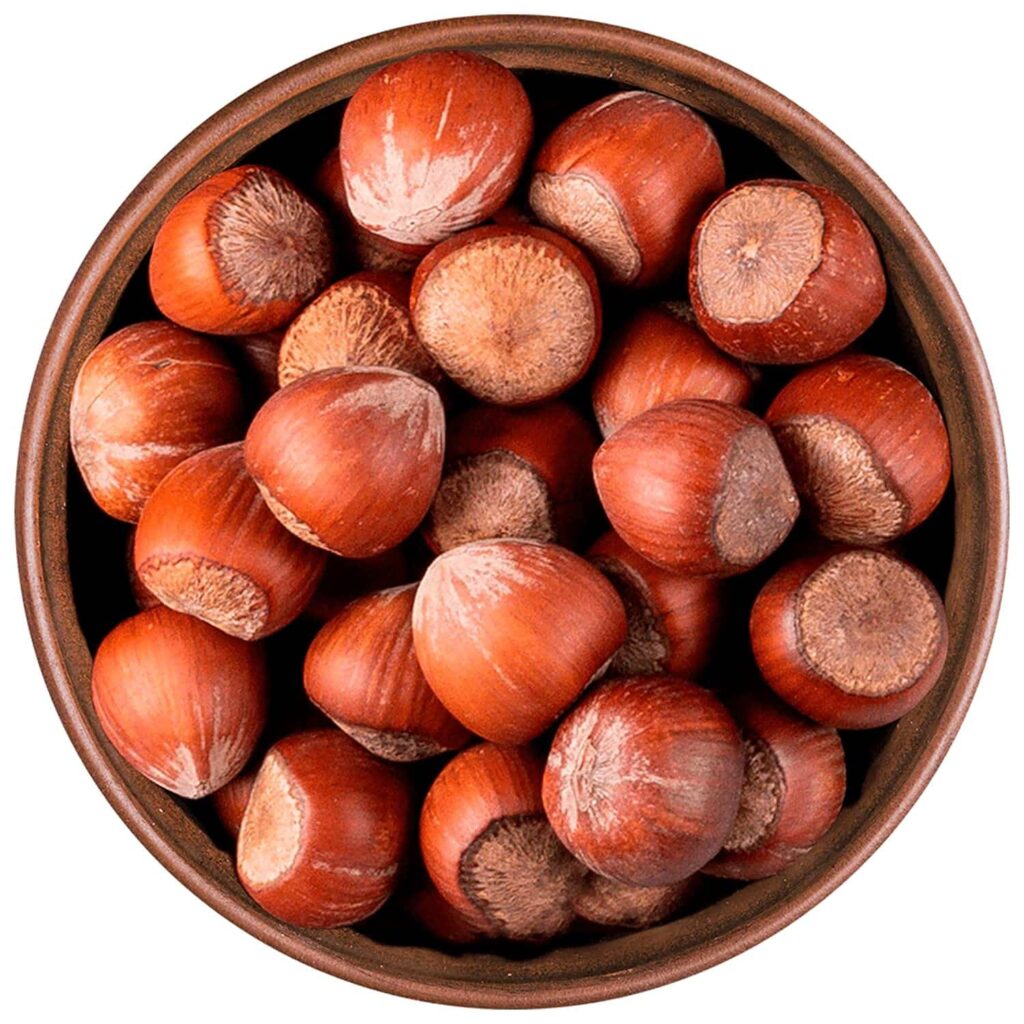
Benefits:
- Rich in Healthy Fats:
Hazelnuts are an excellent source of monounsaturated fats, which promote heart health by lowering bad cholesterol (LDL) levels and reducing the risk of heart disease.
(Healthline) - High in Antioxidants:
Hazelnuts are packed with antioxidants, including vitamin E and phenolic compounds, which protect cells from oxidative stress and reduce inflammation.
(PubMed) - Supports Brain Health:
The high content of vitamin E, thiamine, and healthy fats in hazelnuts contributes to cognitive function, helps prevent age-related cognitive decline, and supports overall brain health.
(Verywell Fit) - Rich in Protein and Fiber:
Hazelnuts provide plant-based protein and dietary fiber, which support muscle growth and repair and promote healthy digestion.
(Medical News Today) - Bone Health:
Hazelnuts are a good source of minerals like calcium, magnesium, and phosphorus, all of which are important for maintaining strong and healthy bones.
(Harvard Health) - Weight Management:
Due to their high fiber and healthy fat content, hazelnuts can help promote feelings of fullness and satiety, making them a beneficial addition to a weight management plan.
(PubMed)
- Serving Size:
- A typical serving size is about 28 grams (approximately 20 hazelnuts).
(Nutritionix)
- A typical serving size is about 28 grams (approximately 20 hazelnuts).
- Nutritional Highlights (per 28g serving):
- Calories: Approximately 176 kcal
(Nutritionix) - Protein: 4 grams
(Nutritionix) - Fiber: 3 grams (12% of the Daily Value)
(Healthline) - Potassium: 5% of the Daily Value
(Verywell Fit) - Magnesium: 8% of the Daily Value
(Medical News Today)
Incorporating hazelnuts into your diet can boost heart health, protect against oxidative damage, enhance brain function, and support digestion. Enjoy them as a snack, sprinkle them over salads, or use them in baking and desserts!
9. Dried Cherries
Why Dried Cherries Are Good for Your Health
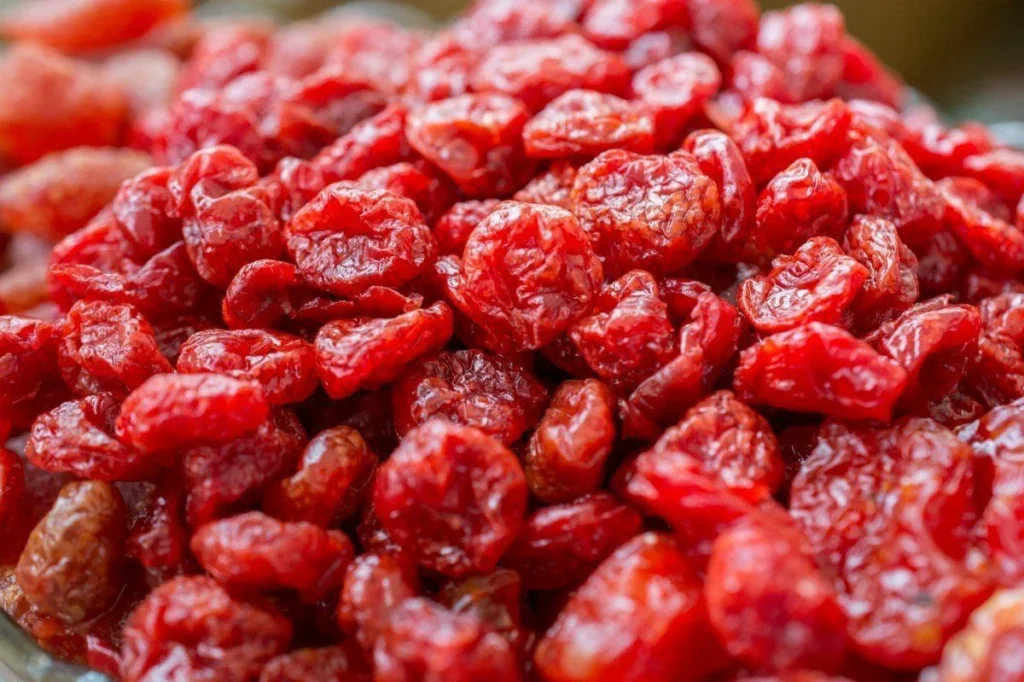
Benefits:
- Rich in Antioxidants:
Dried cherries are packed with antioxidants, especially anthocyanins, which help reduce inflammation, protect against oxidative stress, and may reduce the risk of chronic diseases like heart disease and diabetes.
(Healthline) - Supports Heart Health:
The high content of antioxidants, along with potassium and fiber, in dried cherries can help improve heart health by lowering blood pressure, reducing cholesterol levels, and promoting overall cardiovascular function.
(PubMed) - Improves Sleep Quality:
Dried cherries are a natural source of melatonin, a hormone that regulates sleep. Consuming dried cherries or cherry juice may help improve sleep quality, especially in individuals with insomnia or sleep disturbances.
(Medical News Today) - Anti-Inflammatory Effects:
Dried cherries contain compounds that have been shown to reduce markers of inflammation, which may benefit individuals with conditions like arthritis, gout, or muscle soreness.
(PubMed) - Boosts Immune Function:
Rich in vitamin C and other antioxidants, dried cherries help strengthen the immune system, protect against infections, and promote overall health.
(Verywell Fit) - Promotes Healthy Skin:
The antioxidants in dried cherries help protect the skin from damage caused by free radicals, supporting a healthy, youthful complexion and reducing the appearance of aging signs.
(PubMed)
- Serving Size:
- A typical serving size is about 1/4 cup (approximately 30 grams).
(Nutritionix)
- A typical serving size is about 1/4 cup (approximately 30 grams).
- Nutritional Highlights (per 30g serving):
- Calories: Approximately 120 kcal
(Nutritionix) - Protein: 1 gram
(Nutritionix) - Fiber: 2 grams (8% of the Daily Value)
(Healthline) - Potassium: 5% of the Daily Value
(Verywell Fit) - Vitamin C: 10% of the Daily Value
(Medical News Today)
Incorporating dried cherries into your diet can help protect against inflammation, support heart health, improve sleep, and boost your immune system. They make a great snack on their own or can be added to salads, baked goods, and yogurt!
10. Prunes
Why Prunes Are Good for Your Health
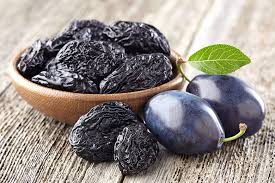
Benefits:
- Promotes Digestive Health:
Prunes are well-known for their ability to relieve constipation. They are high in fiber, particularly soluble fiber, and contain sorbitol, a natural laxative that helps improve bowel movements.
(Healthline) - Rich in Antioxidants:
Prunes are loaded with antioxidants, including phenolic compounds, which help protect the body from oxidative stress and reduce inflammation, lowering the risk of chronic diseases like heart disease and diabetes.
(PubMed) - Supports Bone Health:
Prunes are an excellent source of vitamin K and minerals like calcium and potassium, which are essential for maintaining healthy bones, improving bone density, and preventing bone loss.
(Medical News Today) - Helps Lower Cholesterol Levels:
The soluble fiber in prunes can help lower bad cholesterol (LDL) levels, improving heart health and reducing the risk of cardiovascular diseases.
(Verywell Fit) - Improves Skin Health:
The antioxidants, vitamins, and minerals in prunes help protect the skin from aging, promote hydration, and enhance the appearance of the skin by reducing wrinkles and fine lines.
(Harvard Health) - Regulates Blood Sugar Levels:
Prunes have a low glycemic index, which means they do not cause sharp spikes in blood sugar levels. This makes them a great option for individuals with diabetes or those looking to regulate their blood sugar.
(PubMed)
- Serving Size:
- A typical serving size is about 4-5 prunes (about 40 grams).
(Nutritionix)
- A typical serving size is about 4-5 prunes (about 40 grams).
- Nutritional Highlights (per 40g serving):
- Calories: Approximately 100 kcal
(Nutritionix) - Protein: 1 gram
(Nutritionix) - Fiber: 4 grams (16% of the Daily Value)
(Healthline) - Potassium: 6% of the Daily Value
(Verywell Fit) - Vitamin K: 18% of the Daily Value
(Medical News Today)
Incorporating prunes into your diet can improve digestion, support bone health, reduce inflammation, and enhance skin health. They are a delicious and nutritious snack or can be added to smoothies, cereals, and baked goods.
How to Use Dried Fruits and Nuts in Your Evening Snacks
Enjoy the goodness of dried fruits and nuts by incorporating them into delicious, nutrient-dense evening snacks. Here are some creative ways to combine these ingredients:
- Mix into Yogurt or Oatmeal
Add a handful of dried fruits like apricots, prunes, or cherries into your yogurt or oatmeal. This will not only enhance the flavor but also provide an extra boost of fiber and antioxidants to support digestion and overall health. - Create a Homemade Trail Mix
Combine dried fruits like raisins, cherries, or hazelnuts with nuts (such as almonds, cashews, or walnuts) and seeds (like sunflower or pumpkin seeds) to make a homemade trail mix. This balanced snack provides healthy fats, protein, and fiber to keep you full and satisfied. - Pair with Dark Chocolate
For a sweet treat, pair dried cherries, apricots, or prunes with pieces of dark chocolate. The combination of antioxidants from both the fruit and the chocolate makes this a satisfying and heart-healthy option. - Add to Smoothies
Blend dried fruits with fresh fruits, greens, and protein-rich ingredients like Greek yogurt or a plant-based protein powder. This smoothie will give you a naturally sweet, fiber-filled, and energy-boosting snack. - Make a Fruit Salad
Combine dried fruits with fresh fruits like berries, citrus, and apples for a refreshing, hydrating fruit salad. You can add a sprinkle of cinnamon or a drizzle of honey for added flavor. - Stuff Dates with Nut Butter
For a protein-packed, satisfying snack, stuff pitted dates with your choice of almond, peanut, or cashew butter. You can sprinkle some chia seeds or sea salt on top for extra texture and flavor. - Incorporate into Baked Goods
Add dried fruits like cherries, apricots, or raisins into homemade muffins, cookies, or granola bars. These dried fruits provide natural sweetness, and the addition of nuts or seeds enhances the flavor and texture. - Dried Fruit and Cheese Pairing
Create a savory-sweet pairing by adding dried fruits like apricots or figs to cheese platters. Go for creamy goat cheese or sharp cheddar for a balanced, satisfying snack that combines protein, healthy fats, and a touch of sweetness.
These simple and creative ideas allow you to enjoy the health benefits of dried fruits and nuts in a variety of flavorful ways. Mix and match ingredients to suit your taste and dietary preferences for an evening snack that’s both nourishing and delicious.
- Rich in Nutrients:
-

10 White Chocolate Macadamia Nut Cookies That Will Melt in Your Mouth
10 White Chocolate Macadamia Nut Cookies That Will Melt in Your Mouth
Indulge in the rich flavor of white chocolate macadamia nut cookies, a timeless treat for any occasion. With their perfect combination of creamy white chocolate and crunchy macadamia nuts, these cookies are irresistible for cookie lovers everywhere. Whether you prefer them gooey, gluten-free, or with a surprising twist, here are ten delicious recipes to try.
1. Classic White Chocolate Macadamia Nut Cookies
The classic white chocolate macadamia nut cookie is a timeless favorite. Made with basic ingredients like butter, sugar, eggs, and flour, this recipe is straightforward yet satisfying. For an extra crunch, toss in some makhana to make them even more special.
Looking for creative snack ideas? Check out our easy recipes with makhana.
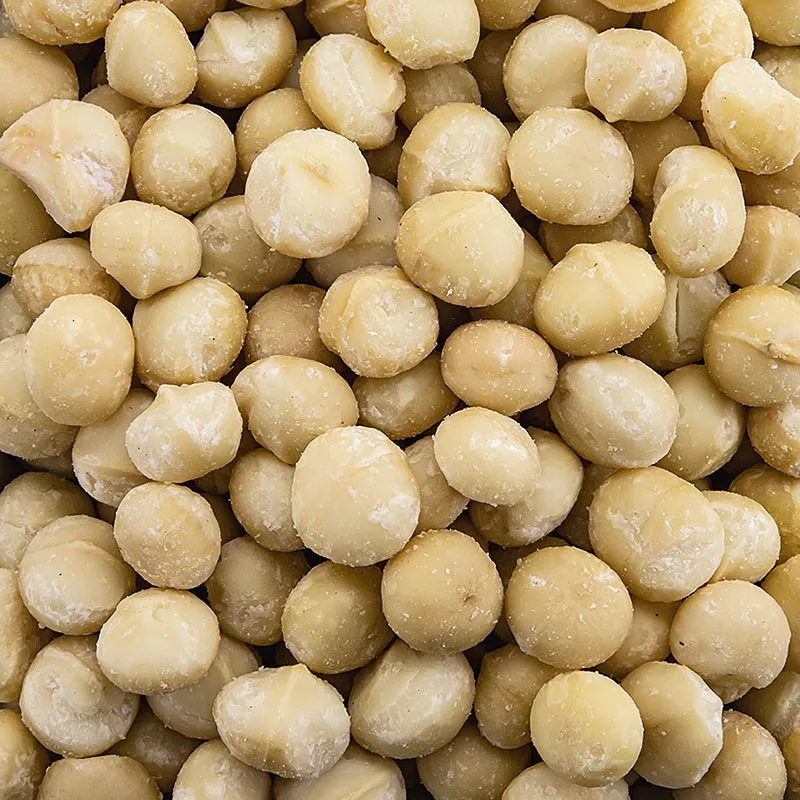
Ingredients:
- 1 cup unsalted butter, softened
- 1 cup granulated sugar
- 1 cup brown sugar, packed
- 2 large eggs
- 2 tsp vanilla extract
- 2 ¾ cups all-purpose flour
- 1 tsp baking soda
- ½ tsp salt
- 1 ½ cups white chocolate chips
- 1 cup macadamia nuts, roughly chopped
- Optional: ½ cup makhana (fox nuts) for extra crunch
Instructions:
- Preheat the oven to 350°F (175°C) and line a baking sheet with parchment paper.
- In a large bowl, cream together butter, granulated sugar, and brown sugar until light and fluffy.
- Add eggs one at a time, followed by vanilla extract, mixing well after each addition.
- In another bowl, whisk together flour, baking soda, and salt. Gradually add this to the wet ingredients.
- Fold in white chocolate chips, macadamia nuts, and makhana if using.
- Drop spoonfuls of dough onto the prepared baking sheet.
- Bake for 10–12 minutes, or until the edges are golden brown. Cool before serving.
Pro Tip: These cookies have been a hit since the 1990s and are perfect for any gathering or bake sale.
2. Gooey White Chocolate Macadamia Nut Cookies
For those who love a more indulgent dessert, gooey white chocolate macadamia nut cookies are the way to go. Packed with white chocolate chunks and macadamia nuts, they’re soft, rich, and perfect with a warm cup of ginger tea.
Ingredients:
- Same as the classic recipe, but with an additional 2 tbsp of cornstarch for extra softness.
- Use 1 cup white chocolate chunks instead of chips.
Instructions:
- Follow the classic recipe, but chill the dough for 30 minutes before baking.
- Bake at 325°F (163°C) for 12–14 minutes to achieve a gooey texture.
- Serve warm with ginger tea for a cozy experience.
Pairing Idea: Serve with ginger tea for added comfort.
3. Salted Caramel Swirl White Chocolate Macadamia Nut Cookies
Add a gourmet twist with a salted caramel swirl. The combination of creamy white chocolate, crunchy macadamia nuts, and sweet caramel creates a luxurious cookie experience.
Ingredients:
- Classic cookie dough base
- ½ cup salted caramel sauce (store-bought or homemade)
Instructions:
- Prepare the classic cookie dough, then gently swirl the salted caramel sauce into the dough using a butter knife.
- Drop the dough onto a lined baking sheet and bake for 10–12 minutes at 350°F (175°C).
- Let them cool slightly before enjoying with cucumber and mint water.
Refreshing Tip: Pair with cucumber and mint water to balance the sweetness.
4. Raspberry Jam White Chocolate Macadamia Nut Cookies
Give your cookies a fruity twist by adding raspberry jam. The tangy jam complements the sweetness of the white chocolate, creating a flavor explosion in every bite.
Ingredients:
- Classic cookie dough base
- ½ cup raspberry jam
Instructions:
- Prepare the classic dough, and once placed on the baking sheet, make a small indentation in each cookie.
- Spoon about ½ tsp of raspberry jam into each indentation.
- Bake for 10–12 minutes at 350°F (175°C).
- Perfect with a warm cup of ginger tea or period-bloating remedies.
Comforting Addition: Enjoy these cookies with a natural remedy for period bloating.
5. Toasted Coconut White Chocolate Macadamia Nut Cookies
Infuse a tropical vibe into your cookies with toasted coconut. The nutty flavor of the coconut pairs perfectly with macadamia nuts and white chocolate for a delightful snack.
Ingredients:
- Classic cookie dough base
- 1 cup shredded coconut (toasted)
Instructions:
- Toast the shredded coconut in a skillet over medium heat until golden.
- Fold the toasted coconut into the cookie dough along with white chocolate chips and macadamia nuts.
- Bake for 10–12 minutes at 350°F (175°C).
- Pair with sunflower seeds for a healthy treat.
Healthy Snack Combo: Serve with sunflower seeds for a nutrient-packed treat.
6. Gluten-Free White Chocolate Macadamia Nut Cookies
Don’t let dietary restrictions keep you from enjoying these cookies! Use gluten-free flours to create a chewy and delicious gluten-free version.
Ingredients:
- 1 cup gluten-free all-purpose flour
- 1 cup almond flour
- ½ tsp xanthan gum (if not in your gluten-free flour mix)
- 1 cup granulated sugar
- 1 cup brown sugar, packed
- 1 cup unsalted butter, softened
- 2 large eggs
- 1 tsp vanilla extract
- 1 ½ cups white chocolate chips
- 1 cup macadamia nuts, roughly chopped
Instructions:
- Cream butter and sugars together until fluffy. Add eggs and vanilla.
- Combine dry ingredients (flours, xanthan gum) in a separate bowl and mix into the wet ingredients.
- Fold in white chocolate chips and macadamia nuts.
- Bake for 10–12 minutes at 350°F (175°C).
- Serve with aloe vera juice for a calming snack.
Soothe Your Senses: Pair with aloe vera juice for a calming snack break.
7. Vegan White Chocolate Macadamia Nut Cookies
For those following a vegan lifestyle, these cookies use plant-based ingredients and vegan white chocolate. They’re so good, you won’t even miss the dairy!
Ingredients:
- 1 cup vegan butter, softened
- 1 cup coconut sugar
- ½ cup almond milk
- 1 tsp vanilla extract
- 2 ½ cups all-purpose flour
- 1 tsp baking soda
- ½ tsp salt
- 1 ½ cups vegan white chocolate chips
- 1 cup macadamia nuts
Instructions:
- Cream vegan butter and sugar together, then add almond milk and vanilla extract.
- Add the dry ingredients and mix until combined.
- Fold in white chocolate chips and nuts.
- Bake for 10–12 minutes at 350°F (175°C).
- Enjoy with kombucha tea.
Healthy Pairing: Enjoy with a glass of kombucha tea for a gut-friendly treat.
8. Matcha White Chocolate Macadamia Nut Cookies
Take your cookies up a notch by adding matcha. The earthy, slightly bitter notes of matcha balance the sweetness of white chocolate beautifully.
Ingredients:
- Classic cookie dough base
- 1 tbsp matcha powder
Instructions:
- Mix matcha powder into the dry ingredients before combining with the wet mixture.
- Proceed as in the classic recipe.
- Bake for 10–12 minutes at 350°F (175°C).
- Serve with green tea for a relaxing dessert.
Relaxation Tip: Pair with green tea to create a calming dessert moment.
9. Espresso White Chocolate Macadamia Nut Cookies
Looking for a boost of energy? Add espresso to your cookie dough. The rich, bold flavor of coffee enhances the creamy white chocolate for a sophisticated treat.
Ingredients:
- Classic cookie dough base
- 1 tbsp instant espresso powder
Instructions:
- Dissolve espresso powder in 1 tbsp warm water and add it to the wet ingredients.
- Proceed with the classic recipe steps.
- Bake for 10–12 minutes at 350°F (175°C).
- Pair with a DIY tan-removal remedy for a self-care session.
Pro Tip: Combine with a DIY tan removal remedy for a refreshing post-baking self-care session.
10. Fleur de Sel White Chocolate Macadamia Nut Cookies
Add a pinch of fleur de sel to elevate the flavor of these cookies. The delicate salt crystals highlight the sweetness of white chocolate and the crunch of macadamia nuts.
Ingredients:
- Classic cookie dough base
- ½ tsp fleur de sel for sprinkling
Instructions:
- Prepare the classic dough and place it on a baking sheet.
- Sprinkle fleur de sel on each cookie before baking.
- Bake for 10–12 minutes at 350°F (175°C).
- Pair with dried apricots for a gourmet snack.
Extra Treat: Pair with dried apricots for a delightful sweet-and-salty snack.
Conclusion: Your Cookie Adventure Starts Here!
White chocolate macadamia nut cookies are a versatile treat that can be customized to suit every taste. Whether you prefer them classic, vegan, or with a fancy twist, there’s a recipe here for you. Start baking today and let these delightful cookies melt in your mouth.
Ready to bake?
Check out more healthy dessert recipes on our blog for inspiration!
Suggested Sources for Further Reading
Here are some trusted sources to explore more about cookie trends and preferences:

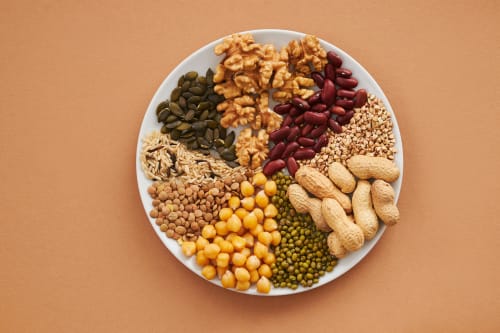





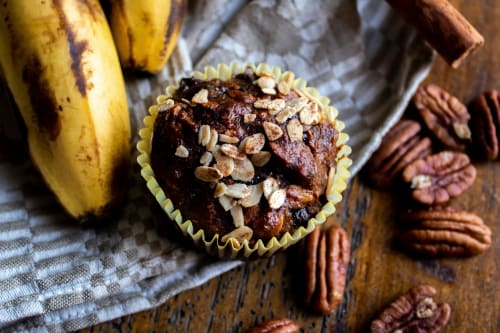


Leave a Reply to Period Bloating: 6 Natural Remedies to Feel Better | A Youth's Guide Cancel reply